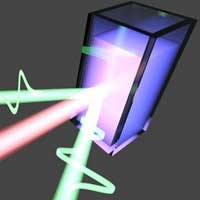 Scientists have developed a method involving terahertz radiation to monitor temperature changes when laser light is focused on tiny gold particles in water.
Scientists have developed a method involving terahertz radiation to monitor temperature changes when laser light is focused on tiny gold particles in water.
Tuesday, December 17, 2019
Turning light energy into heat to fight disease
 Scientists have developed a method involving terahertz radiation to monitor temperature changes when laser light is focused on tiny gold particles in water.
Scientists have developed a method involving terahertz radiation to monitor temperature changes when laser light is focused on tiny gold particles in water.
Chemists glimpse the fleeting 'transition state' of a reaction
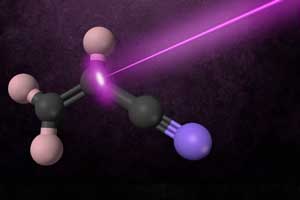 New technique for observing reaction products offers insights into the chemical mechanisms that formed them.
New technique for observing reaction products offers insights into the chemical mechanisms that formed them.
Storing data in everyday objects
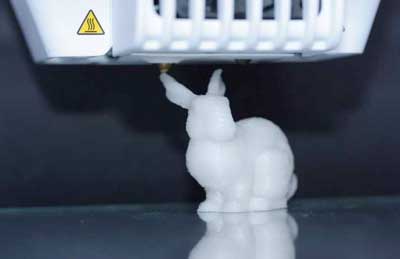 Researchers have discovered a new method for turning nearly any object into a data storage unit. This makes it possible to save extensive data in, say, shirt buttons, water bottles or even the lenses of glasses, and then retrieve it years later.
Researchers have discovered a new method for turning nearly any object into a data storage unit. This makes it possible to save extensive data in, say, shirt buttons, water bottles or even the lenses of glasses, and then retrieve it years later.
Camouflage made of quantum material could hide you from infrared cameras
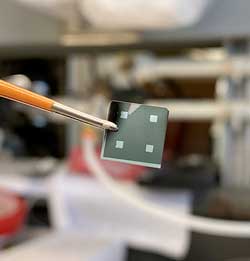 Infrared cameras detect people and other objects by the heat they emit. Now, researchers have discovered the uncanny ability of a material to hide a target by masking its telltale heat properties.
Infrared cameras detect people and other objects by the heat they emit. Now, researchers have discovered the uncanny ability of a material to hide a target by masking its telltale heat properties.
Nanocellulose-based air filter offers cost-effective low resistance
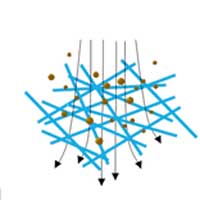 Researchers have developed a new nanocellulose-based material that has outstanding air filtration performance.
Researchers have developed a new nanocellulose-based material that has outstanding air filtration performance.
Researchers observe brain-like behavior in nanoscale device
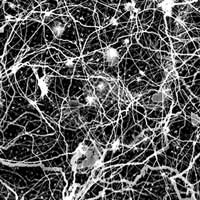 'Tiny silver brains' could have long-term implications for more powerful, energy-efficient computing.
'Tiny silver brains' could have long-term implications for more powerful, energy-efficient computing.
Advanced viral nanovaccine for cancer immunotherapy
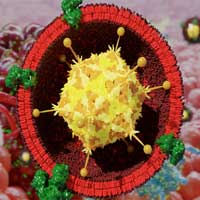 Researchers have discovered a novel system to generate an artificially enveloped oncolytic adenovirus to direct the immune response against cancer.
Researchers have discovered a novel system to generate an artificially enveloped oncolytic adenovirus to direct the immune response against cancer.
Researchers close in on new nonvolatile memory
 Researchers have achieved a breakthrough on the way to new types of nonvolatile memory devices. The team came up with a unique method for measuring the electric potential distribution across a ferroelectric capacitor.
Researchers have achieved a breakthrough on the way to new types of nonvolatile memory devices. The team came up with a unique method for measuring the electric potential distribution across a ferroelectric capacitor.
A new gene therapy strategy, courtesy of Mother Nature
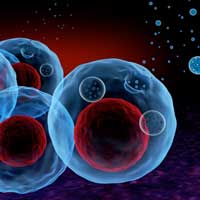 Scientists have developed a new gene-therapy technique by transforming human cells into mass producers of tiny nano-sized particles full of genetic material that has the potential to reverse disease processes.
Scientists have developed a new gene-therapy technique by transforming human cells into mass producers of tiny nano-sized particles full of genetic material that has the potential to reverse disease processes.
Liquid-like behaviour displayed but phase remains stable in ultrathin hexagonal gold nanoribbons
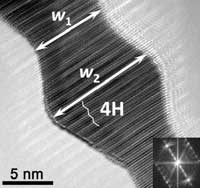 Scientists have discovered that the ultrathin gold nanoribbons with unique hexagonal (4H type) crystal phase shows 'liquid-like' behaviour under heating, but its hexagonal crystalline structure remains stable. This provides insight into the thermal stability of this new type of metallic nanomaterials and facilitates the development of practical applications in the future.
Scientists have discovered that the ultrathin gold nanoribbons with unique hexagonal (4H type) crystal phase shows 'liquid-like' behaviour under heating, but its hexagonal crystalline structure remains stable. This provides insight into the thermal stability of this new type of metallic nanomaterials and facilitates the development of practical applications in the future.
The world's fastest molecular shuttle
 Thanks to a clever chemical design, researchers have succeeded in making a very fast molecular machine. The moving parts shift more than one nanometre relative to each other in a record-breaking time of 30 billionths of a second.
Thanks to a clever chemical design, researchers have succeeded in making a very fast molecular machine. The moving parts shift more than one nanometre relative to each other in a record-breaking time of 30 billionths of a second.
Subscribe to:
Comments (Atom)
